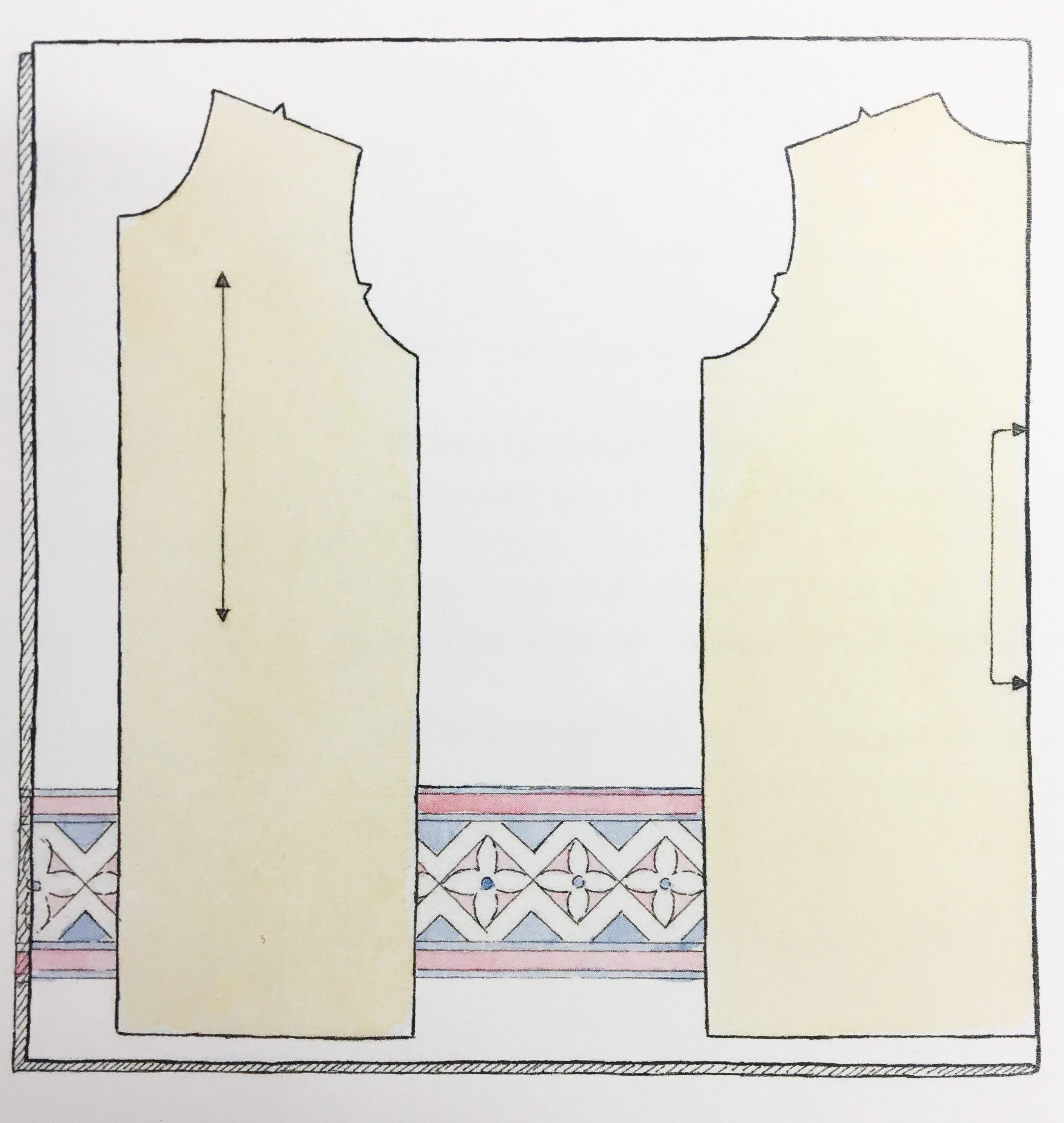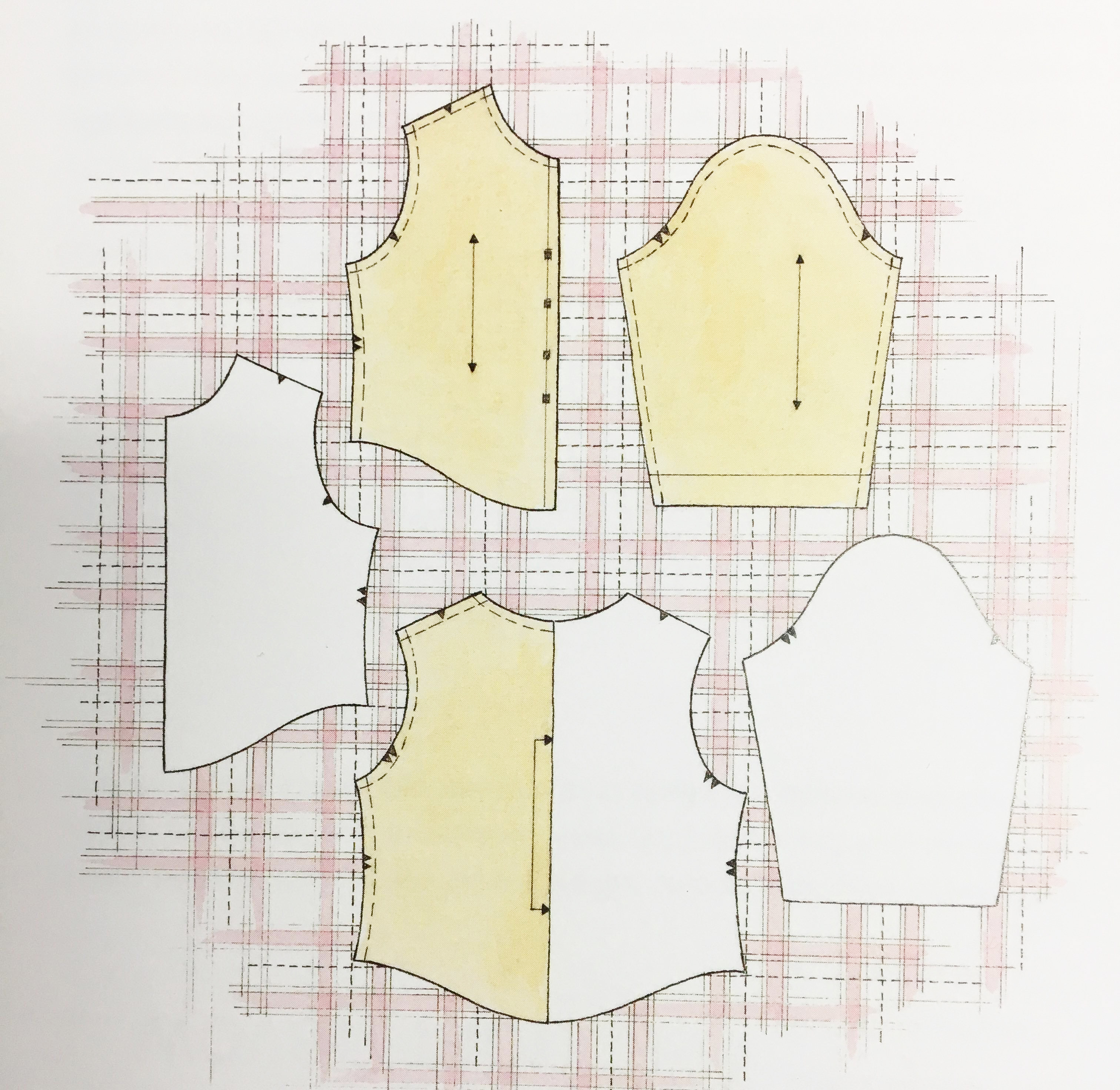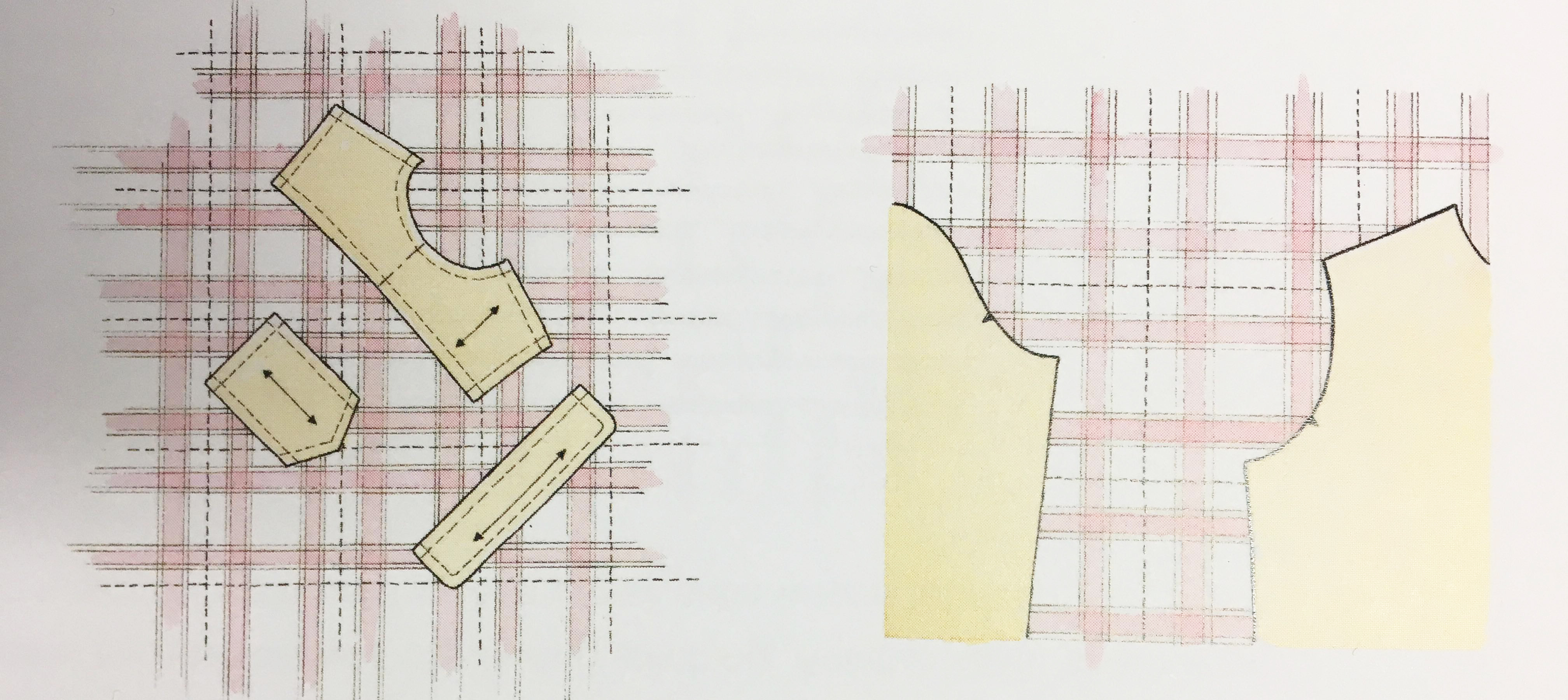Plaids, stripes, and prints are strong visual patterns, so it is important to match them at prominent seams. If you are careful laying and cutting out the pattern, the seams will be almost invisible. You need to buy extra fabric, 1/4″ to 1/2 yard (0.25 to 0.5cm), depending on the size of the pattern repeat (the distance from one bar of the plaid or stripe to the next identical bar or from one large motif to another). The larger the repeat, the more extra fabric you need.
Small scale and overall prints do not require pattern matching, so they are easier to lay out and cut. Lay out fabrics with a border print (a prominent design along the selvage) so the pattern falls at a center front opening or runs along the garment hem. Choose simple style garments and avoid any pattern that says it is not suitable for plaids or stripes.

Laying Out Patterns Piecing
Open the fabric in a single layer, right side up. Trace pattern pieces that need both a right and left side. If a piece is to be cut on the fold, abut the right and left pieces together, as shown in the drawing below.

Center the front and back pattern pieces on a prominent colour bar or motif. Carefully align the side seam notches. Match the pattern pieces at stitching lines, not cutting lines.
Center the sleeve on the same prominent colour bar or motif as the front and back. Align the front armhole notches of the sleeve and garment front.
Position smaller pieces, such as yokes, plackets, or patch pockets, on the true bias (45 degrees to the grain) or position them so the plaid, stripe, or print motifs will match the larger garment pieces.

